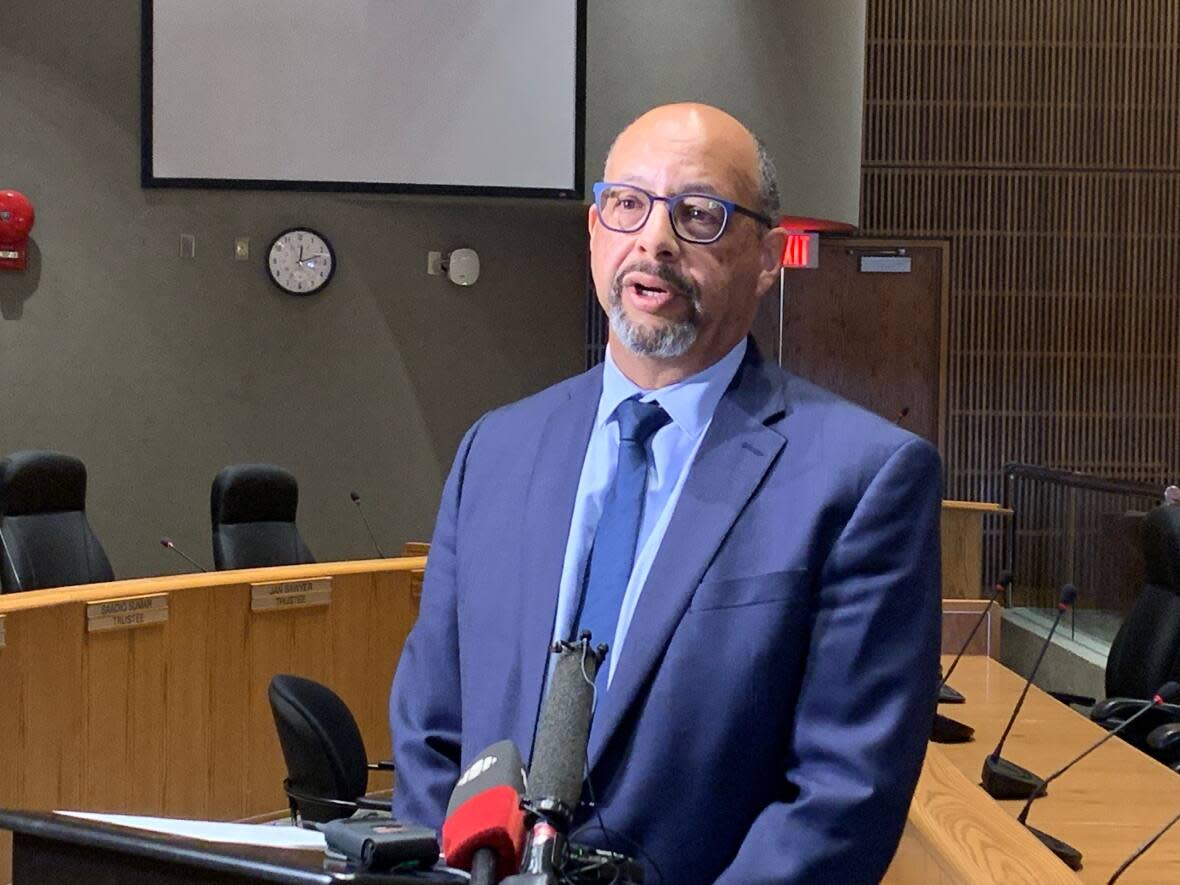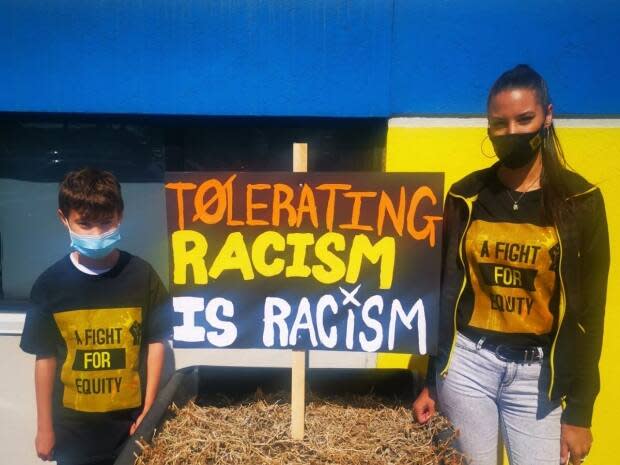Edmonton public students surveyed on race, ethnicity, gender identity in new report

The data from a first-time survey asking Edmonton Public Schools students how they identify has been released.
"This report is an opportunity to celebrate the diverse identities of the students we serve based on their own voices and what they were willing to share with us," Kent Pharis, assistant superintendent and co-chair of the Anti-racism and Equity Steering Committee, said at a board meeting Tuesday.
More than 76,000 students from across the board's 213 schools were asked to complete the extended student demographic survey last fall, asking about their race, religion, ethnicity, gender and Indigenous identity.
About 55,800 students – 73 per cent – in Grades 4 to 12 completed the questionnaire. Students in Grades 7 to 12 were also asked about their sexual orientation.
Students were allowed not to answer some questions and could choose more than one option for each question, so some survey tallies added up to more than 100 per cent.
Ethnic or cultural origin
About 10 per cent of the respondents self-identified as First Nations, Métis or Inuit.
About 11 per cent said the identity that best described them was Black. Sixteen per cent said East Asian, eight per cent Middle Eastern, 16 per cent said South Asian, about seven per cent said Southeast Asian, and about 33 per cent said white. Other answers included Hispanic and/or Latinx while some said they were not sure or their group was not listed.
Trustee Julie Kusiek said one section of the findings that stuck out was that fewer than 50 per cent of students identified Canadian as their ethnic or cultural origin.
"I think it just really underlines how diverse our students are and our need as a division to really make sure that we're stepping up to make sure that we create that sense of belonging," Kusiek said.
The collection of extended student demographic data is a key action in the board's plan, developed in the summer of 2021, to support anti-racism and equity efforts, Pharis said.
"In the months and years ahead, we will take a closer look at this data, along with information about academic achievement, school belonging and safety, to better understand actions we can take that will remove barriers," Pharis said.

Parent Tiera Williams is founder of the anti-racism group A Fight For Equity, and was one of the main organizers of a massive 2020 protest against systemic racism.
"I am happy to see that there is race-based data starting to happen and I would like to see the results when we do figure out how many students have been expelled and how many have dropped out for certain reasons of racism," Williams said.
Religion, gender
Out of a dozen choices under religion and/or spiritual affiliation, 22 per cent in Grades 7 to 12 responded Christian, 18 per cent responded Muslim, and 22 per cent selected that they have no religious or spiritual affiliation.
There were a dozen options for gender identity on the survey. Most in Grades 4 to 12 chose male or female, while non-binary and a gender identity not listed on the survey each received about three per cent of the responses.
On the question about sexual orientation, about 67 per cent of the student responses from Grades 7 to 12 chose only heterosexual. About seven per cent said prefer not to answer, almost two per cent said lesbian, 1.4 per cent gay, and 8 per cent bisexual.
Williams, whose Grade 6 son took the survey, said she heard there was confusion with some of the questions, especially for the younger students, regarding gender identity.
If the survey is taken again in the future, Williams hopes more collaboration will take place between the students, parents and teachers to prevent some parents from opting their children out of the survey because of the gender identity questions.
"I think maybe more education towards students and parents on what that is would be more beneficial because as we know, obviously, there's a lot of racialized people in the LGBTQ community as well as white people, and they all deserve a place," Williams said.
Superintendent Darrel Robertson said now that the data is collected, analysts can use it in conjunction with other student data, such as attendance records, to identify correlations.
"This is all about helping kids," Robertson said.


